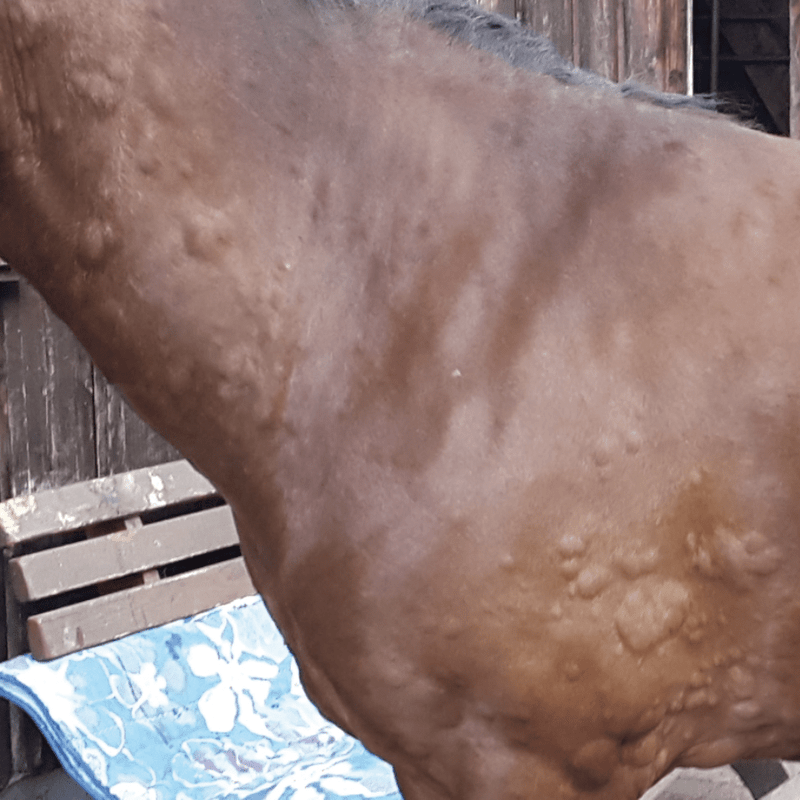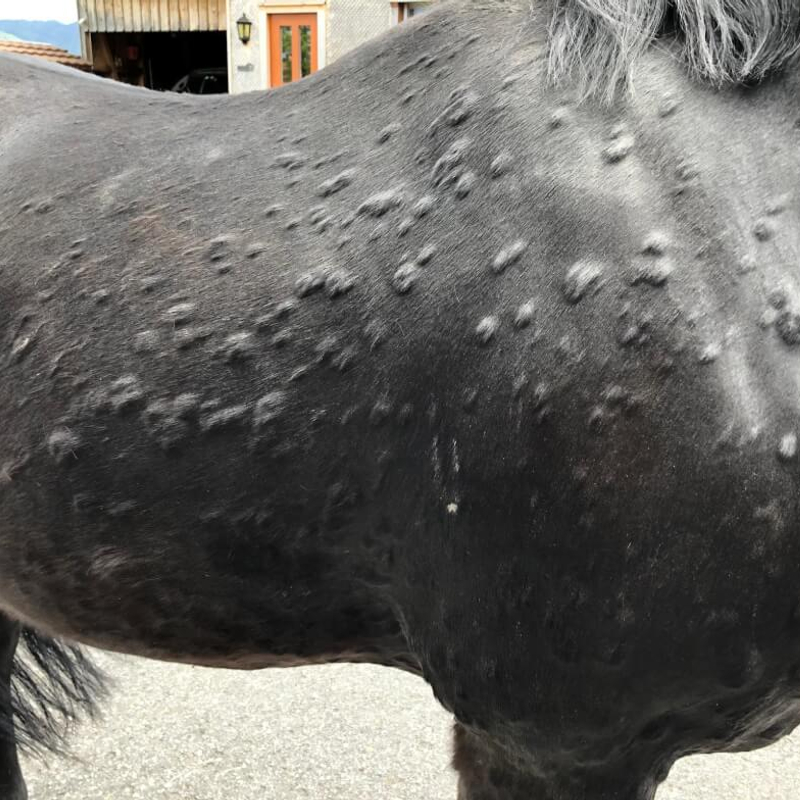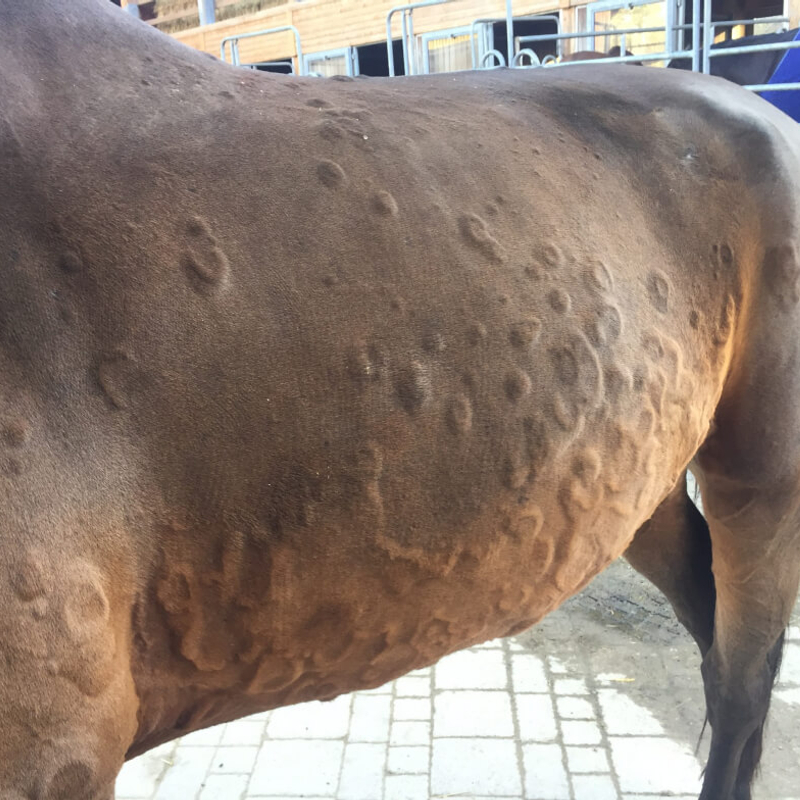Recurrent Urticaria
Recurrent urticaria, also known as nettle rash or hives, is a very common dermatological disease in the horse. The skin changes appear suddenly and can go away within a day. In some cases, however, the lesions persist for a long time.

What is the trigger?
The pathophysiology of urticaria in horses is very complex and has not yet been fully understood. Urticaria is a clinical symptom with a variety of possible causes. Both immunological and non-immunological triggers can lead to degranulation of mast cells and basophilic granulocytes, which results in the release of vasoactive and inflammatory mediators. This leads to increased permeability of the blood vessels, inflammation and loss of protein in the skin, which ultimately causes the typical skin changes
Immunological hypersensitivity reactions to injected (medication, insect bites), ingested with food or inhaled antigens occur most frequently. Physical triggers such as heat, cold or pressure are less often the cause of urticaria. However, increased exposure and unexplained idiopathic triggers can also lead to urticaria.
Symptoms?
Typical symptoms are sudden edematous wheals on the skin and / or the mucous membrane. These wheals are mostly flat, steeply sloping nodes of various diameters that appear symmetrically on both sides of the neck, body and upper limbs. But they can also appear in the form of circular or serpentine-like wheals, linear, oozing or, if several wheals converge, as so-called “giant wheals”. They vary in size from about 0.5 cm to 15 cm. The wheals are typically easy to indent and the fingerprint remains in the skin for a few seconds. Itching can accompany it, while hair loss is atypical and only occurs with weeping wheals. Wheals that occur in the area of the saddle or girth, together with the annoying itching, can make horses unrideable.


Who is affected?
Of all domesticated animals, urticaria is the most common in horses. All age groups can be affected, but horses 1-10 years of age are most commonly affected. There is no known gender predisposition. Thoroughbreds and Arabs are more likely to show urticaria due to inhaled antigens.
In horses, it is very difficult to differentiate between acute and chronic urticaria. Recurrent urticaria in humans is when the urticaria occurs at least twice a week for 6 weeks. In horses, the occurrence of urticaria at least twice or the recurrence of urticaria after cortisone therapy was recently defined as recurrent urticaria.
Although most horses with urticaria respond very well to the use of cortisone or antihistamines, if the cause of the urticaria cannot be eliminated, they will often relapse once therapy is stopped.
